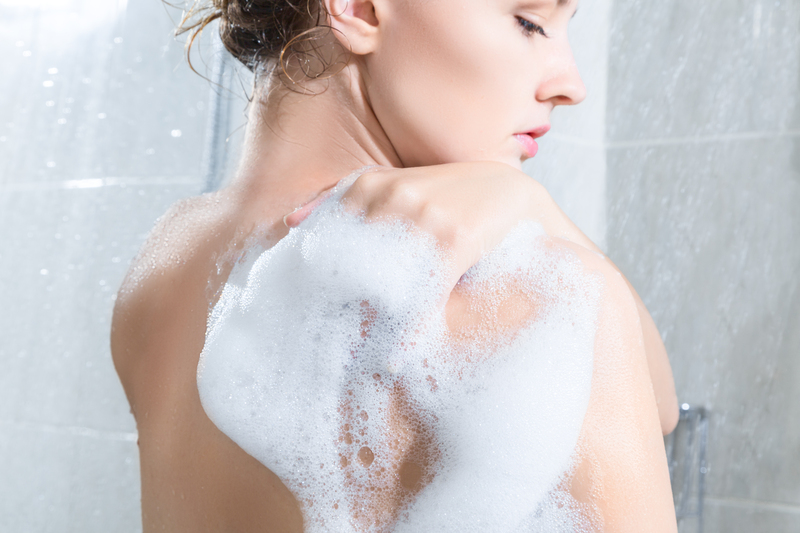Discover Effective Methods for Cleaning Stubborn Stovetop Burn Marks
Posted on 27/09/2025
Discover Effective Methods for Cleaning Stubborn Stovetop Burn Marks
Stovetops are a central feature in every kitchen, but they can become a nightmare to clean, especially when burn marks and scorch stains accumulate. Whether you cook daily or just use your stove occasionally, those stubborn stovetop burn marks can be tough to eliminate. Discovering effective methods for cleaning burnt-on stains will not only help maintain your kitchen's appearance but also extend the life of your appliance. In this comprehensive guide, we'll explore various tried-and-tested techniques for removing burnt residue and restoring your stovetop's shine.
Why Removing Burn Marks from Your Stovetop Matters
Cooking accidents happen--sauces spill over, pots boil dry, or ingredients drip onto hot coils. If these spills are not cleaned promptly, they can leave unsightly burn marks that harden and become even harder to eradicate. Cleaning burnt-on stains frequently isn't just for aesthetics--it also prevents odors, bacterial growth, and potential fire hazards. Furthermore, a clean stovetop makes cooking more enjoyable and demonstrates good kitchen hygiene.

Understanding Different Stovetop Types and Burn Mark Causes
Before tackling those stubborn stovetop burn marks, it's crucial to determine your stove's surface and what's caused the discoloration. Let's analyze the common stovetop types and what leads to their stains:
Popular Stovetop Surfaces
- Gas Stovetops: These stoves usually have removable grates and trays. Food can spill and burn on the metal or enamel surfaces.
- Electric Coil Stovetops: Food burnt onto the coils themselves or the drip pans beneath can leave noticeable scorch marks.
- Glass/Ceramic Stovetops: These are notorious for showing even minor residue. Burnt-on stains easily mar their smooth, shiny surfaces.
- Induction Cooktops: Like glass, they require gentle cleaning to avoid scratching and damaging the heating surface.
Common Causes of Burn Marks
- Pots boiling over and leaving behind burnt food residue
- Spilled oils or sugary substances caramelizing onto the surface
- Leftover crumbs that char and stick during high heat
- Improper cleaning methods that bake stains further into the surface
Understanding your stovetop's material and the composition of the burn mark helps determine the safest and most effective cleaning technique for stubborn marks.
Safety First: Preparing Your Stovetop for Cleaning
Before starting, always ensure your stovetop is off and completely cool. Unplug electric stoves or switch off the gas supply if needed. Remember to ventilate your kitchen, open a window, and wear protective gloves to shield your hands from harsh cleaning agents--especially when dealing with strong chemical cleaners or abrasive tools.
Effective Methods for Cleaning Stubborn Stovetop Burn Marks
Now that you're ready, let's discover the best ways to clean burnt-on marks for every stovetop type. Below, you'll find both commercial and natural cleaning remedies, along with step-by-step instructions.
1. Baking Soda and Vinegar Method
This classic natural cleaning hack is renowned for gently dislodging burnt residue without scratching sensitive surfaces.
- Sprinkle generous amounts of baking soda directly over the burn marks.
- Pour white vinegar over the baking soda. The mixture will fizz as it reacts, helping to lift grime.
- Let the solution sit for 10-20 minutes to soften the burned areas.
- Wipe gently using a soft, damp cloth or non-abrasive sponge. Repeat if necessary.
*Pro tip: For extra-tough stains, place a hot, damp towel over the solution for 15 minutes before scrubbing.
2. Commercial Stovetop Cleaners
If you're facing extremely stubborn stovetop burn marks, a specialized commercial cleaner can be invaluable. These products--available in cream, powder, or spray form--are specifically formulated to break down scorch marks and greasy buildup.
- Read the manufacturer's instructions carefully.
- Apply as directed, letting it sit if recommended for deep cleaning.
- Use a soft sponge or cloth to scrub stained areas.
- Rinse the surface thoroughly to avoid chemical residues that could later burn or discolor.
Never mix commercial cleaners with other chemicals; this could cause toxic fumes or damage your appliance.
3. Razor Blade or Scraper for Glass Tops
For flat glass and ceramic cooktops, using a razor blade scraper can safely remove burnt residue. This method is highly effective but should be done with caution:
- Hold the blade at a 45-degree angle to the glass.
- Gently scrape off the burnt layer without applying excessive force.
- Wipe the area clean with a damp cloth.
Be careful not to gouge the glass. Always use a blade designed for stovetop cleaning, and never use this method on gas or electric coils.
4. Paste of Baking Soda and Hydrogen Peroxide
Mixing the powerful cleaning agents of baking soda and hydrogen peroxide produces a mild abrasive paste that's great for tackling persistent marks.
- Mix 1 part baking soda with 1 part hydrogen peroxide until you achieve a thick paste.
- Apply this paste directly to the burn marks.
- Allow the paste to sit for at least 15-20 minutes.
- Scrub roughly but gently using a sponge in circular motions.
Rinse off residual paste with a damp cloth, and repeat if needed.
5. Dish Soap and Hot Water Soak
For lighter stains or burnt-on food, sometimes a simple soak can work wonders.
- Add several drops of grease-cutting dish soap to a bowl of hot water.
- Soak a microfiber towel in the solution and lay it over the marks for 15-30 minutes.
- Wipe clean, applying a little elbow grease if necessary.
This method is gentle and especially suitable for enamel-coated grates or electric stove drip pans.
6. Lemon and Salt Scrub
The natural degreasing power of lemons, combined with gritty salt, acts as a mild abrasive for lifting stubborn stains.
- Squeeze a fresh lemon over the affected area.
- Sprinkle coarsely ground salt onto the burn mark.
- Scrub gently using the lemon halves (cut-side down) or a soft sponge.
- Wipe the stovetop down with a damp cloth when finished.
This method leaves your kitchen smelling fragrant and fresh.
7. Ammonia for Removable Parts
For grates, burner caps, or drip pans with tough burn marks, an ammonia soak can help release caked-on grime.
- Place the parts in a zip-top bag (or a covered container) and add about 1/4 cup ammonia.
- Seal the bag or cover the container tightly and leave it overnight outside.
- Open with caution (ammonia fumes are strong), and rinse parts thoroughly with water.
Never use ammonia on the main stove surface or mix it with other chemicals.
Preventing Stubborn Burn Marks on Your Stovetop
While knowing how to clean tough stovetop stains is valuable, prevention is even better. Follow these prevention tips to keep your stovetop spotless:
- Clean up spills promptly. Even minor drips, if left, can become baked-on scars.
- Use burner liners or foil covers where possible, especially on gas or electric coils.
- Wipe your stove after every use, even if it looks clean, to remove invisible splatter.
- Deep clean your stovetop weekly to prevent residue from turning into hard-to-remove burn marks.
- Use properly sized pans and pots to minimize overflow and spills onto burners.
- Always cook on medium or lower heat unless necessary, as high heat increases the risk of scorching spills.
Materials and Tools You Might Need
- Baking soda and white vinegar
- Hydrogen peroxide
- Lemon and coarse salt
- Commercial stovetop cleaner
- Non-abrasive sponge or scrubber
- Microfiber cloths or towels
- Spray bottle (for vinegar application)
- Razors/blades (for glass or ceramic tops only)
- Ammonia (for removable parts only)
- Protective gloves

FAQs: Your Questions About Cleaning Burnt Stovetop Stains, Answered
1. Can I use steel wool or abrasive pads on my stovetop?
No. Especially on glass, ceramic, or enamel surfaces, steel wool can cause permanent scratching and dull the finish. Stick to non-abrasive sponges or specialty stovetop pads.
2. What should I avoid when cleaning induction or glass cooktops?
Avoid all harsh abrasives, scouring powders, and strong alkaline cleaners. Use recommended cooktop cleaners, soft sponges, or the baking soda and vinegar method.
3. Are there commercial cleaners specifically for stovetops?
Yes! Brands like Bar Keepers Friend, Weiman, or Cerama Bryte offer stovetop-specific solutions. Always check if they're suitable for your cooktop material.
4. How often should I deep clean my stovetop?
Deep cleaning once a week is recommended if you cook often. Immediate spots should be wiped down after every use to prevent buildup.
5. The burn mark won't budge; what should I do?
Sometimes, deeply set stains require several rounds of cleaning. If the mark persists, try alternating between cleaning methods and allowing longer soaking times. If it's a glass cooktop, use a dedicated razor scraper with care.
Conclusion: Restore Your Stovetop's Sparkle the Smart Way
Keeping your stovetop pristine doesn't have to be a challenge. With these effective methods for cleaning stubborn stovetop burn marks, you're fully equipped to deal with everything from minor spills to baked-on disasters. Each cleaning approach--whether natural or commercial--serves a purpose, and with a bit of patience, consistency, and the right technique, your kitchen can always shine.
The keys are swift action, regular maintenance, and using the correct method for your specific stovetop. Armed with this knowledge on removing tough stovetop stains, you can enjoy cooking without dreading the cleanup. Take pride in your sparkling stovetop--it's the heart of your culinary workspace!




